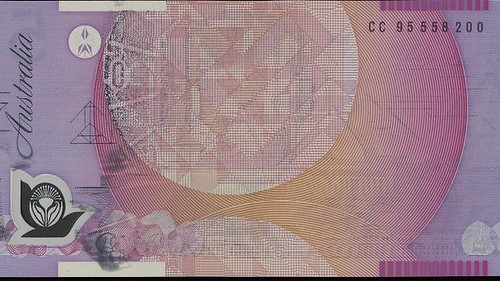
PREV ARTICLE
NEXT ARTICLE
FULL ISSUE
PREV FULL ISSUE
AUSTRALIAN ARTICLE HIGHLIGHTS BANKNOTE ERRORSAn article this week in The Age highlights banknote errors and the people
who collect them. Here's an excerpt. -Editor
 Even human error has a monetary value. Flawed stamps and coins have long been among the most desirable to collectors, and now mis-printed banknotes have their admirers. As shown at Charles Leski's latest Coin, Banknotes, Stamps and Postal History auction (now held under the Mossgreen banner) an Australian banknote normally valued at $5 can be worth over $1000 if someone has accidentally stuffed it up. This 1993 polymer note has a nominal value of $10 but because it is missing the intaglio printing phase on the front — the final stage in the printing process, that adds the fine details, such as writing or complex artwork – it's now worth much more. Adding to its value, there's no serial number on the reverse and the checker who spotted the error has added their ID number in felt pen. Sold in "uncirculated" condition, it fetched $1220 IBP at the September 30 sale in Melbourne. The question is, how do such obvious duds make it into the public domain? Leski says that even in the polymer period the quality control of banknotes was initially done by humans, so the occasional misprint passed through the system and escaped into the real world. Among enthusiasts, the magnitude of the error is what determines value at auction. Errors can range from a missing serial number to, well, what you see here. These are on the higher limits of the scale. Condition is also important and these examples were obviously spotted early in their life-span and handed over to someone who cared. Twenty years later and, bingo, their face value has jumped by more than a thousand dollars in some cases. Graham Shepherd is a pioneer in this specialist area. A long-time collector and dealer in rare banknotes, he started to concentrate on error notes in 1988 and has since discovered that others share this eccentricity. He estimates there are a few hundred like-minded souls. According to Shepherd the ones worth collecting are the bleedingly obvious, as in notes missing one colour or totally blank on one side. Examples of the latter also turn up on occasion. Needless to say, if one appears in your spare change, keep it. What about counterfeit notes? Shepherd says these are also of interest to some collectors, despite the grey legality of owning them. "I won't say whether I have any or not," he says, "but yes, they are quite collectable." To read the complete article, see:
Wayne Homren, Editor The Numismatic Bibliomania Society is a non-profit organization promoting numismatic literature. See our web site at coinbooks.org. To submit items for publication in The E-Sylum, write to the Editor at this address: whomren@gmail.com To subscribe go to: https://my.binhost.com/lists/listinfo/esylum All Rights Reserved. NBS Home Page Contact the NBS webmaster 
|